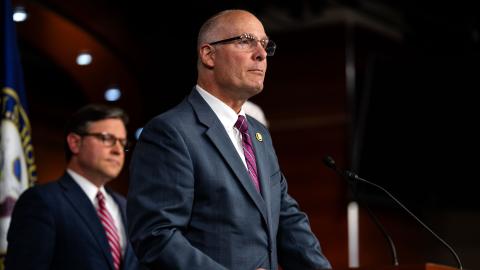A casual reader of the Federal Communications Commission’s many documents on network neutrality would reasonably conclude that the network neutrality rules are necessary for robust investment in the broader information sector. The linkage between FCC rules and investments animates the FCC’s recent court brief in which the agency defends its latest rules in the D.C. Circuit Court.
The empirical economics, however, are the opposite of the FCC storyline. Capital expenditures grew less rapidly when network neutrality rules were in place.
Today, the FCC is facing a challenge to its latest set of network neutrality rules. Its network neutrality rules have been shot down by the courts not once but twice before. Most recently, in early 2014 the D.C. Circuit found most of the FCC’s network neutrality rules unlawful. Before the Court now are the new FCC network neutrality rules written earlier this year.
On page 2 of its recent court brief, the FCC states: “In 2014, this Court affirmed the ‘Commission’s finding that Internet openness’ fuels a virtuous cycle of online innovation, consumer demand, and broadband deployment.”
Of course, the D.C. Circuit Court is not an arbiter of empirical economics. It is an arbiter of the law. The D.C. Circuit Court in 2014 opined on the legal logic of the FCC’s 2010 order in adopting rules. The D.C. Circuit Court did not, and could not, have offered an opinion about whether the 2010 network neutrality rules actually facilitated “online innovation, consumer demand, and broadband deployment.”
The 2010 FCC network neutrality order consisted of three sets of rules on broadband providers: transparency, non-blocking, and anti-discrimination. The 2015 rules are similar to the 2010 rules with a different legal theory and with the addition of wide range of rules on broadband providers that were originally intended for telephone companies.
Whether the 2010 rules actually facilitated investment is an empirical matter. Anticipating that empirical issue, the Commission on page 2 of its recent brief, quoting from 2014 comments from the NAACP and Communications Workers of America, bravely puts forward the supposed evidence as follows:
“‘The [virtuous cycle] led to nearly $230 billion in capital expenditures by the leading network and edge providers over the three-year period’ from 2011 to 2013, when the 2010 open Internet rules were in effect.”
The reader is supposed to assume that $230 billion over three years is a sign of investment strength. Unfortunately for America, the $230 billion cited by the FCC is not a sign of strength.
To begin with, the figure represents capital expenditures for 20 companies, not the entire affected industry. Moreover, these capital expenditures are not necessarily restricted to the United States. Some of those investments may have been abroad, partly in reaction to the FCC’s network neutrality order.
The Census Bureau has the actual information that the FCC is attempting to examine. The Census Bureau publishes information on capital expenditures by broad industry categories in a document based on the Annual Capital Expenditures Survey
The information sector is most directly affected by the network neutrality rules. The most recent ACES report shows that capital expenditures in the information sector grew by 8.2% annually from 2010 to 2013. These are the years that the FCC attempts to compare and to suggest that capital expenditures were growing rapidly.
Capital expenditures in the remainder of the economy, however, grew by 10.7% annually during the same period as the American economy grew out of the Great Recession from 2008-2009. At first blush, a difference in growth rates of 8.2% and 10.7% may not seem like much, but these are dramatically different growth rates. If the investment in the information sector had grown at 10.7%, capital expenditures in 2013 alone would have been $131.9 billion rather than $123.1 billion.
Any reader of FCC documents on network neutrality would reasonably conclude that capital investments in the information sector are driving the American economy. If you were to ask most Americans to name the fastest-growing sector in the economy and the one attracting the most capital expenditures, the information sector would no doubt rank high on the list of answers.
It would no doubt come as a surprise to many Americans that the information sector was not even first, but it was below average from 2010-2013, the period of the supposedly virtuous network neutrality rules.
The information sector has not always been a laggard in U.S. investments. Between 2004 and 2010 capital expenditures in the sectors grew at 2.6% annually while the remainder of the economy grew at 1.3%. Both of these growth rates are low and adversely affected by the Great Recession. These growth rates show, however, that before the FCC’s network neutrality rules, capital expenditures in the information sector grew more rapidly than in the remainder of the economy. The pattern reverses after the network neutrality rules are in effect.
Of course, many factors other than the FCC’s network neutrality rules affect investment. But those rules did not help dramatically. The opposite appears to be the case. Since 2010, there has been a relative decline in capital expenditures in the information sector. Hal Singer and Gordon Crovitz analyze the declines in capital investment for large ISPs after the latest set of network neutrality rules were known.
The FCC’s network neutrality rules leads to many things. Sadly, more investment is not one of them.

















